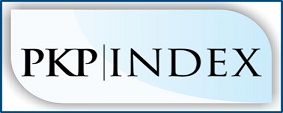Leadership Style And Its Impact On Nurses Level Of Work Motivation
DOI:
https://doi.org/10.31004/jpdk.v2i2.18966Abstract
Work motivation is the spirit that can drive nurses to perform their activities or duties in order to achieve organizational goals, and motivate every nurse to have not only personal needs but also the advancement of nursing services in an institution. The purpose of this study is to analyze the leadership style and work motivation of nurses at the Pesantren II Kediri Community Health Center. This research is quantitative in nature with a descriptive correlational research design. The population in this study consists of all employees of the Pesantren II Kediri Community Health Center, totaling approximately 21 individuals. Primary data collection was conducted through questionnaires. The results of the study indicate that the leadership style applied by the head of the department includes democratic, participative, authoritarian, and laissez-faire styles. The performance of nurses, including the stages of assessment, diagnosis, intervention, implementation, and evaluation, is categorized as good. There is an influence of participative, authoritarian, and laissez-faire leadership styles on the performance of implementing nurses. The conclusion of this study is the presence of an influence of leadership style on the performance of implementing nurses at the Pesantren II Kediri Community Health Center. The leadership should apply an appropriate leadership style tailored to the working conditions and the needs of implementing nurses in order to enhance the performance of nursing care services in the healthcare facility.Downloads
Published
2021-08-31
How to Cite
Puspitosari, D. R. ., Juwariyah, T. ., & Priyanto, A. . (2021). Leadership Style And Its Impact On Nurses Level Of Work Motivation. Jurnal Pendidikan Dan Konseling (JPDK), 2(2), 289–292. https://doi.org/10.31004/jpdk.v2i2.18966
Issue
Section
Articles
License
Copyright (c) 2021 Dewi Reto Puspitosari, Titik Juwariyah, Agus Priyanto

This work is licensed under a Creative Commons Attribution-ShareAlike 4.0 International License.
Authors retain copyright and grant the journal right of first publication with the work simultaneously licensed under a Creative Commons Attribution-ShareAlike 4.0 International License that allows others to share the work with an acknowledgement of the works authorship and initial publication in this journal. Authors are able to enter into separate, additional contractual arrangements for the non-exclusive distribution of the journals published version of the work (e.g., post it to an institutional repository or publish it in a book), with an acknowledgement of its initial publication in this journal. Authors are permitted and encouraged to post their work online (e.g., in institutional repositories or on their website) prior to and during the submission process, as it can lead to productive exchanges, as well as earlier and greater citation of published work (See The Effect of Open Access).
.png)













